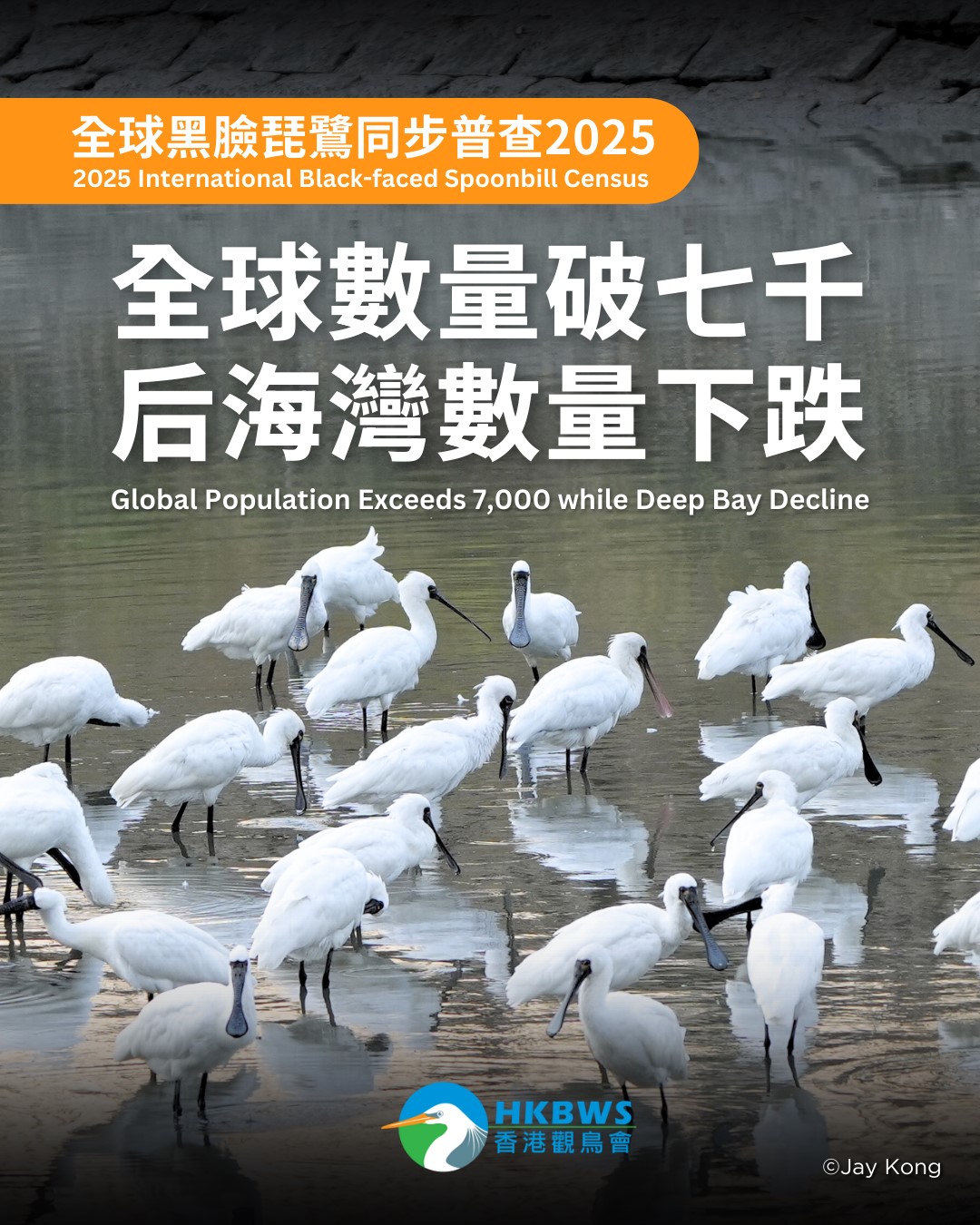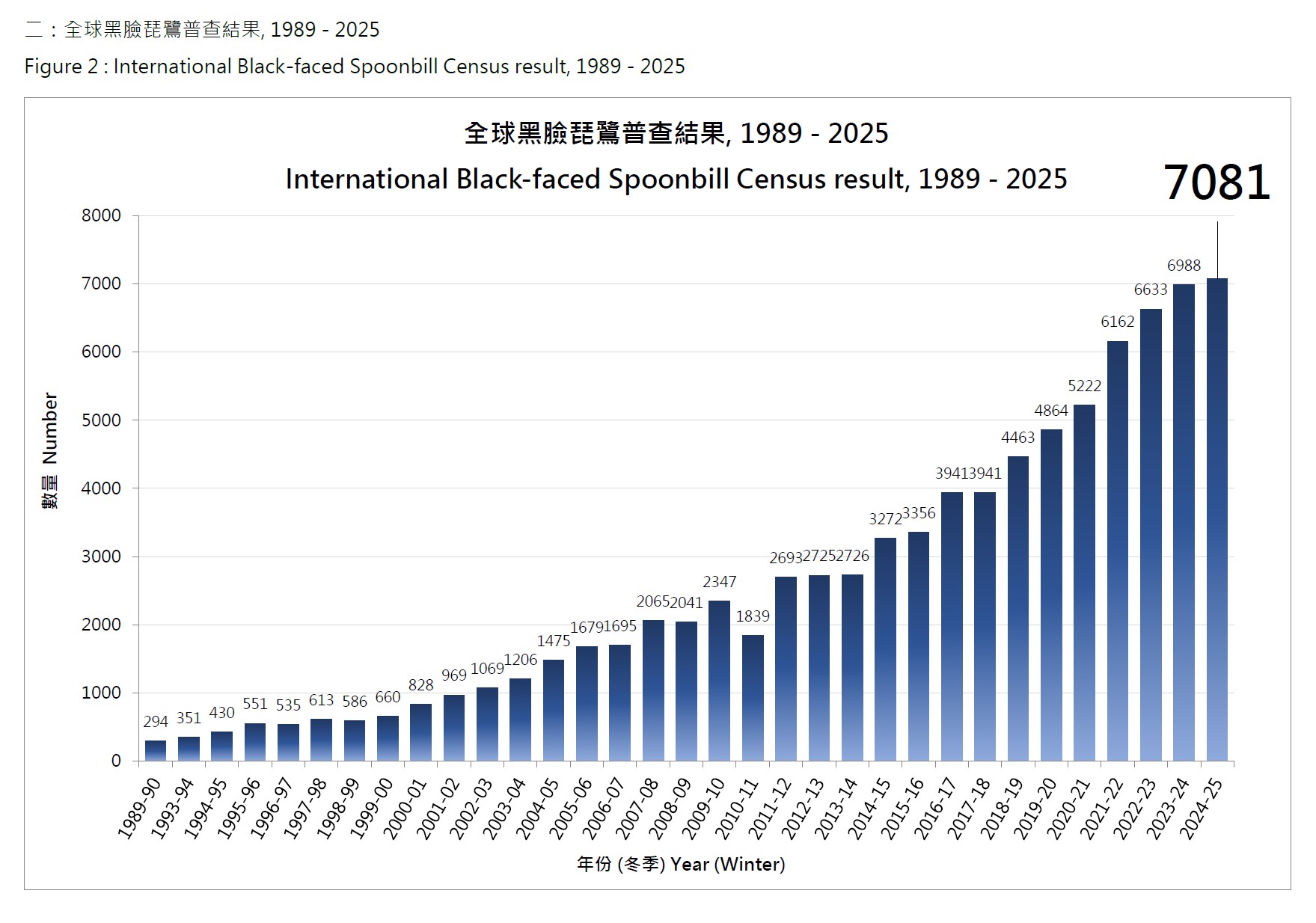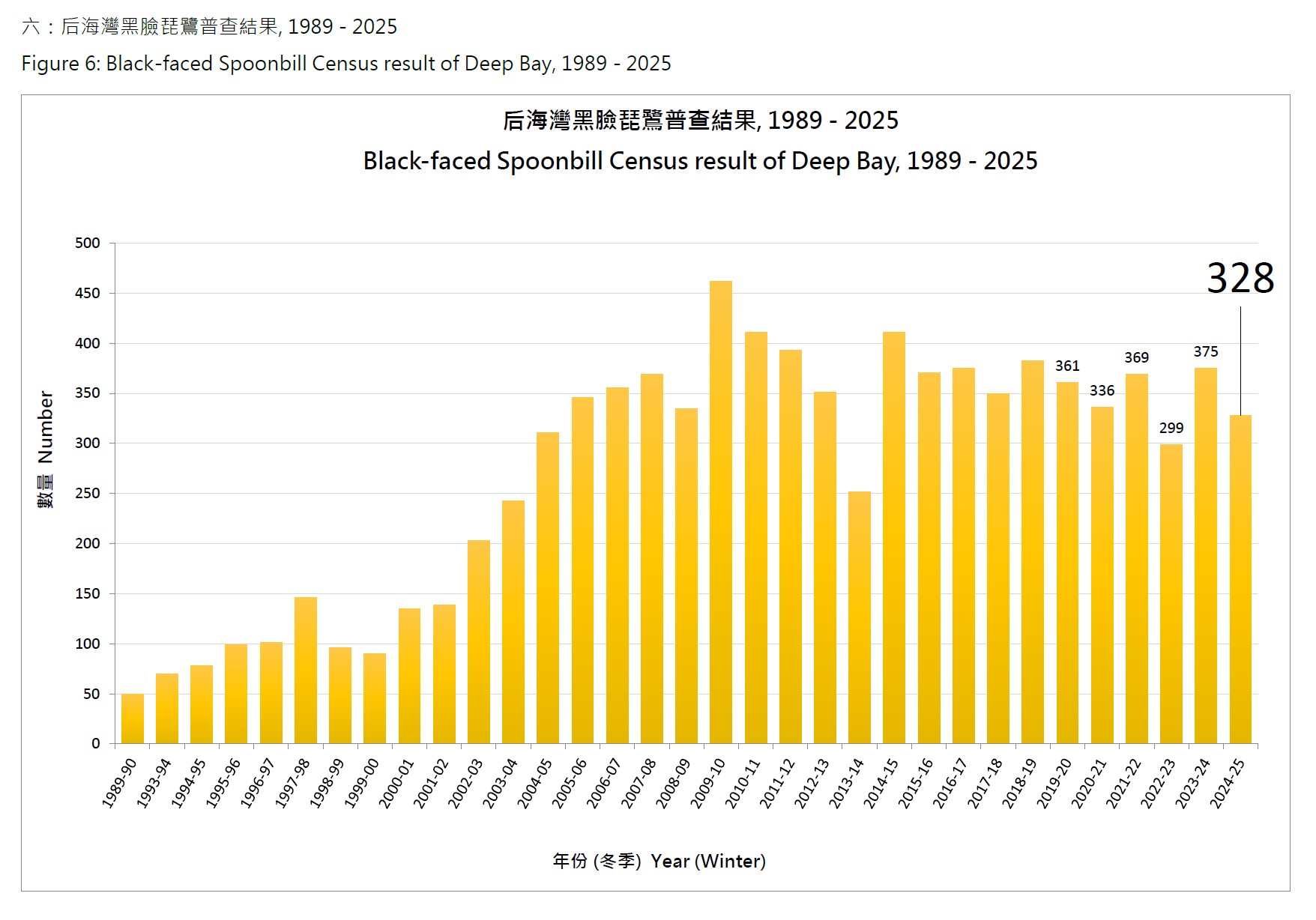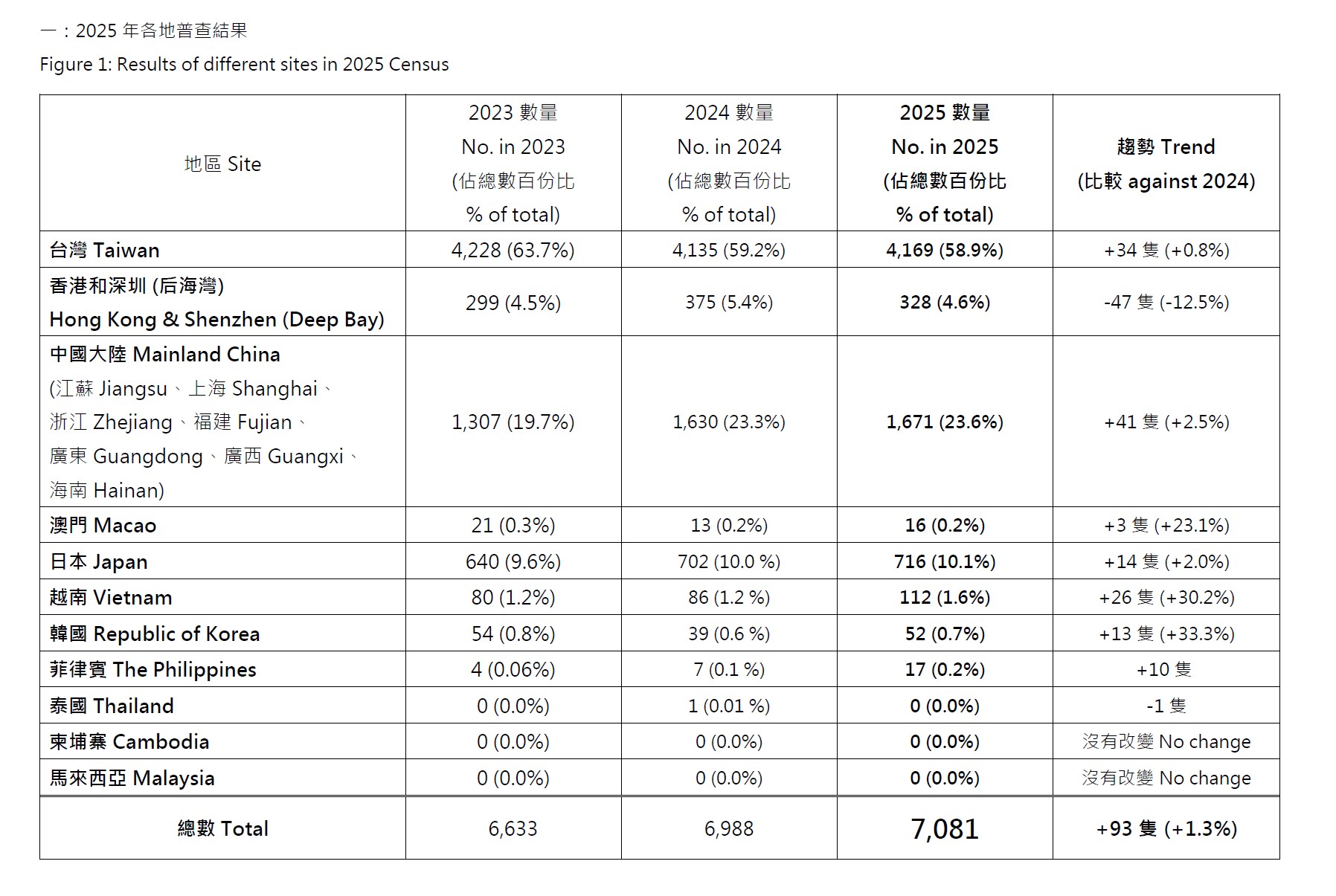
HKBWS initiates the International Black-faced Spoonbill Census every January. This year's census took place from January 17th to 19th, mobilizing over 200 conservation experts and volunteers across 11 wintering regions, including Hong Kong, mainland China, Taiwan, South Korea, Japan and Vietnam.
Taiwan remains the largest wintering ground, with 4,169 Black-faced Spoonbills (58.9% of global population), a 0.8% (34 individuals) increase from last year. Mainland China, as the second-largest wintering ground, recorded with a 2.5% increase (41 individuals) to 1,671 Black-faced Spoonbills, revealing a slowdown in growth. Japan recorded 716 Black-faced Spoonbills, which is a 2% rise from last year.
Yu Yat-tung, Director of HKBWS, noted that while the global population hit a record high, the growth rate of about 1% is the second-lowest in a decade. As for whether the population growth has reached its bottleneck, this still requires further observation and research. He highlighted the slowdown in growth rate in the three major wintering sites in Taiwan, Mainland China and Japan, suggesting that "We must set more aggressive global targets—not just halting wetland loss but expanding wetland areas and actively restoring breeding and wintering habitats—to ensure 30 years of conservation efforts are not wasted."
Offshore Wind Farms Become Death Trap in the Migration Routes – International 10-Year Conservation Action Plan will be Formulated
With the rapid development of wind power, offshore wind farms are becoming a lethal threat to migratory birds. A study published last year in the academic journal Ecology revealed that two GPS-cellular tracked Black-faced Spoonbills were forced to alter their migration route while crossing the Yellow Sea due to encountering wind farms in winter 2021 and 2022 respectively. One of them tragically failed to complete its southward migration through the wind farm before winter, eventually died one month after returning to Korea.
Yu Yat-tung, Director of HKBWS, pointed out that wind farms not only reduce the mudflat habitats essential for Black-faced Spoonbills, but also pose fatal risks to birds due to collisions with operating turbine blades. He explained, "Black-faced spoonbills rely on multiple stopovers during migration, which means any environmental changes in a single site may put a threat on the entire population." He stressed the need for regional conservation efforts and stronger inter-governmental cooperation, urging the coastal sites to implement enhancement measures to protect migratory birds.
This February, HKBWS, together with local and international conservation experts, held a symposium to propose the revision of the International Single Species Action Plan for the Conservation of the Black-faced Spoonbill (ISSAP) published in 2010. The North-East Asian Subregional Programme for Environmental Cooperation (NEASPEC), an intergovernmental cooperation framework formed by multiple governments in North-East Asia, will support the revised action plan which aims to deal with the new challenges for the conservation of Black-faced Spoonbills. The symposium also decided to designate the third Saturday of March each year as “International Black-faced Spoonbill Day” to raise public awareness of its conservation.
Deep Bay Population Decline Exposes Gaps in Cross-Departmental Wetland Conservation
While most wintering sites recorded increases in the number of Black-faced spoonbills this year, Deep Bay recorded a drop to 328 individuals, a decline of 47 individuals (12.5%) compared to last year. Yu Yat-tung, Director of HKBWS, noted that the Deep Bay population growth has stagnated over the past decades, with its global proportion continuously declining, likely due to the condition of wetland size and habitat quality in Hong Kong. He worried, "If Hong Kong fails to expand its wetlands—or worse, allows further habitat loss and degradation—it may struggle to attract more wintering Black-faced spoonbills. In the worst-case scenario, Black-faced Spoonbills will choose other wintering sites instead of Deep Bay."
As a critical hub in the East Asian-Australasian Flyway, Deep Bay serves as both a major wintering ground and a vital stopover site for migratory birds. Yu Yat-tung emphasized, "Bird migration is like a battle for survival. Black-faced spoonbills rely heavily on wetland stopovers. Each wetland stopover along the flyway is a lifeline for them." Maintaining a network of more widely distributed and increasing number of suitable habitats not only ensures food security but also reduces disease transmission risks. Yu Yat-tung stated, "Hong Kong hosts the largest wintering site for Black-faced spoonbills in the Greater Bay Area, we have both international and national responsibilities to protect their wetlands."
In response to the previous Biodiversity Strategy and Action Plan (BSAP), the government released the Black-faced Spoonbill Species Action Plan 2024-2028, which outlines 19 actions—with the first being to "scrutinize proposals for development, infrastructure projects or land use planning" safeguard the habitat for BFS for in-situ conservation. However, key decision-making bodies such as the Development Bureau, Planning Department, and Civil Engineering and Development Department were excluded from implementing this action, revealing that biodiversity considerations remain inadequately mainstreamed in cross-departmental land policies. In the next BSAP, the government should address this institutional gap to ensure that wetland protection is prioritized in spatial planning, including for the Northern Metropolis.
Figure 1: International Black-faced Spoonbill Census result, 1989-2025

Figure 2: Black-faced Spoonbill Census result of Deep Bay, 1989-2025

Figure 3: Results of different sites in 2025 Census




